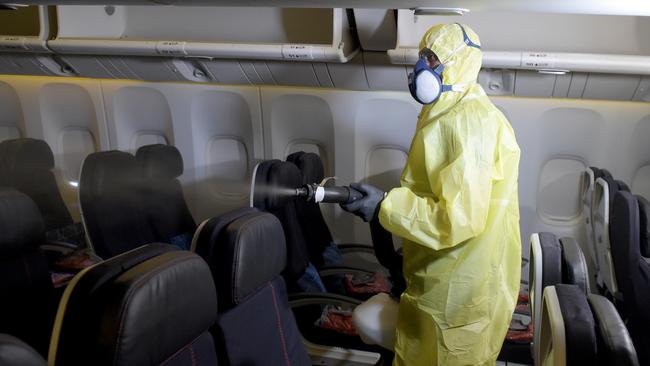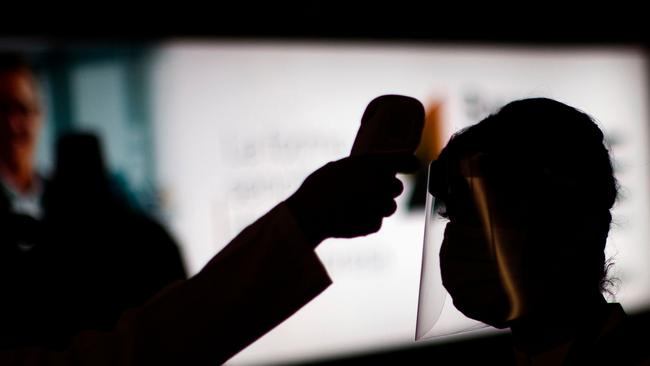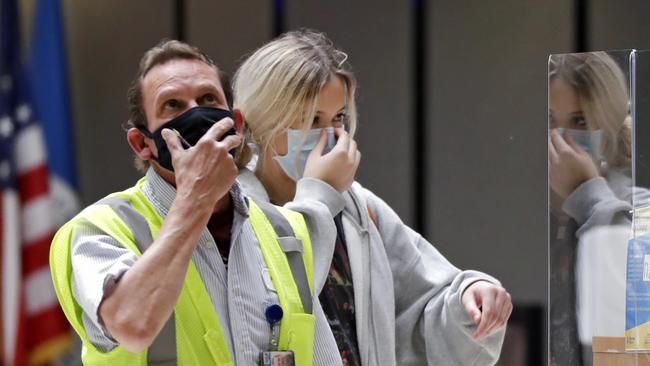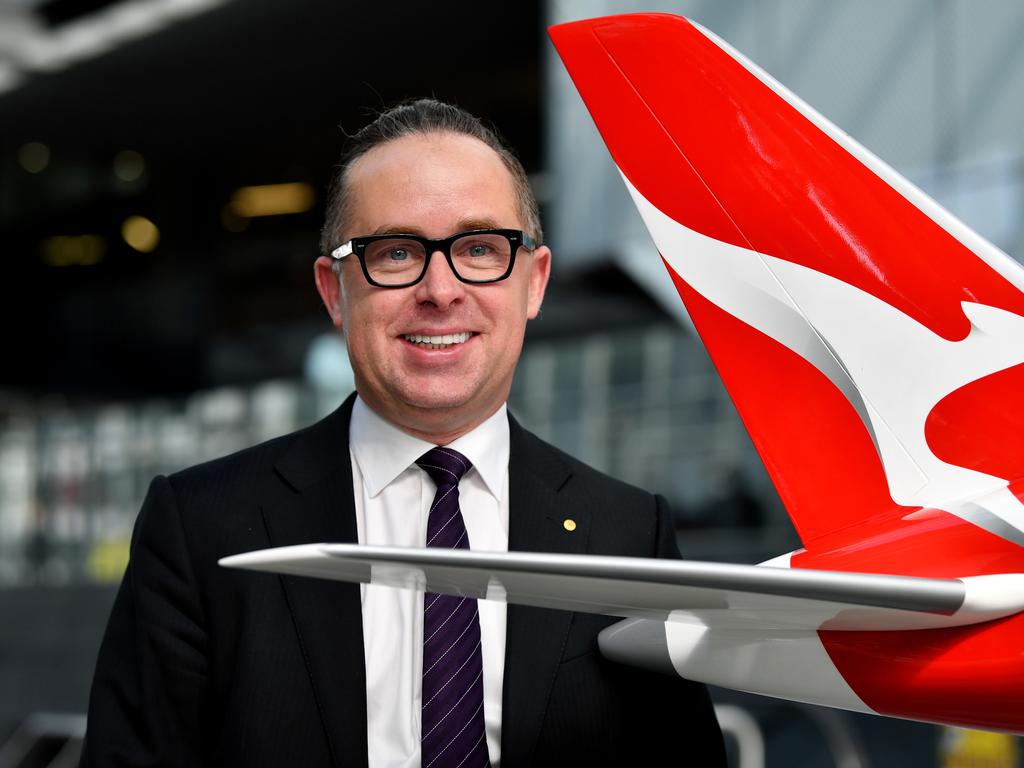Coronavirus Australia: What air travel looks like post-pandemic
Temperature checks, face masks, contactless check-in and less-crowded aircraft and terminals. This is post-pandemic air travel.

In an uncertain time for the aviation industry, one thing is very clear — travelling by air will never be the same again.
Temperature checks, face masks, frequent hand washing and sanitisation, contactless check-in and bag drops, and smaller less crowded aircraft are all very much part of the future to travel.
In-flight magazines appear unlikely to return and meal services will be reduced to the bare minimum as airlines strive to limit contact between cabin crew and passengers.
Higher airfares may also be on the cards if airlines bow to public pressure to provide more space between passengers, in a post-pandemic “crowd-averse” world.
PRE-FLIGHT
Changes to travel will start well before the flight, with fewer services available for booking and a reduced number of destinations at least for the next year or two.
Instead of non-stop services, passengers will have to get used to indirect flights as airlines seek to fill their cabins by stopping at several ports along the way.

Travellers will be encouraged to do as much as they can online from bookings to check-in, to avoid using touchscreen kiosks at airports and approaching the customer service desk.
Special permits to fly may also be required in the form of immunity passports particularly for those who have recovered from COVID-19.
AT THE AIRPORT
Terminals groaning with people seem almost certain to be a thing of the past, with airports likely to face legal directions to enforce social distancing in all public spaces.
Once inside, passengers will be expected to move through the terminal with a minimum of personal interaction, using electronic tags to send bags on the way and QR codes to check-in.
Security checks are likely to incorporate thermal imaging, as Canberra Airport has done, to detect raised temperatures in passengers.

Airline customer service officers will still be available behind clear hygiene screens and some carriers, such as Regional Express, will require passengers to don face masks from check-in to disembarkation.
Hand sanitiser dispensers will abound throughout the airport, from check-in to the gate, and high standards of hygiene will be required in bathrooms.
Airline lounges will look different with much more distance between seating, and strict limits on the number of guests at any one time. Smorgasbord-style dining and self-serve drinks will probably disappear and reading material could also be restricted.
IN THE AIR
Instead of magazines and newspapers, passengers will be offered face masks and antibacterial wipes on Qantas flights for their travelling comfort and that of others.
Food and beverage services will be minimised to reduce contact between crew and passengers, and movement around the cabin discouraged.
In the case of Irish low cost carrier Ryanair, passengers wanting to use the bathroom are being asked to raise their hand to request permission from cabin crew, instead of standing in the aisle.

Although some airlines plan to block out middle seats to increase the distance between passengers, Qantas is adamant there is no medical basis for that due to the hospital-grade air filters on board aircraft that remove 99.9 per cent of bacteria and viruses from the cabin.
High backed seats are considered another barrier to the spread of viruses and anyone concerned about their proximity to other passengers will be able to don face masks.
Cleaning the cabin between flights could be a longer process, with airlines using hospital-grade disinfectants to wipe down all seats, tray tables and restraints before the next service boards.
COMMERCIAL FLIGHT ALTERNATIVES
Whether travellers will want to fly on commercial passenger flights will become clearer in coming months.
Qantas CEO Alan Joyce says 98 per cent of the airline’s frequent flyers are already planning their next trip.
But Brisbane-based charter operator Alliance Airlines is convinced many large businesses will continue to use charter flights, after resorting to those typically more expensive services during the pandemic.

“Those sort of changes are likely to be permanent or around for a very long time,” said Alliance managing director Scott McMillan.
“Once people get a taste of being able to fly where they want, at a time that they want, they won’t want to go back.”
Limited commercial services will also favour charter operations, he said.
“Take Emerald (in central Queensland). There used to be five regular public transport flights a day to Emerald now there’s two a week. We are years away from seeing that again.”
More Coverage









To join the conversation, please log in. Don't have an account? Register
Join the conversation, you are commenting as Logout